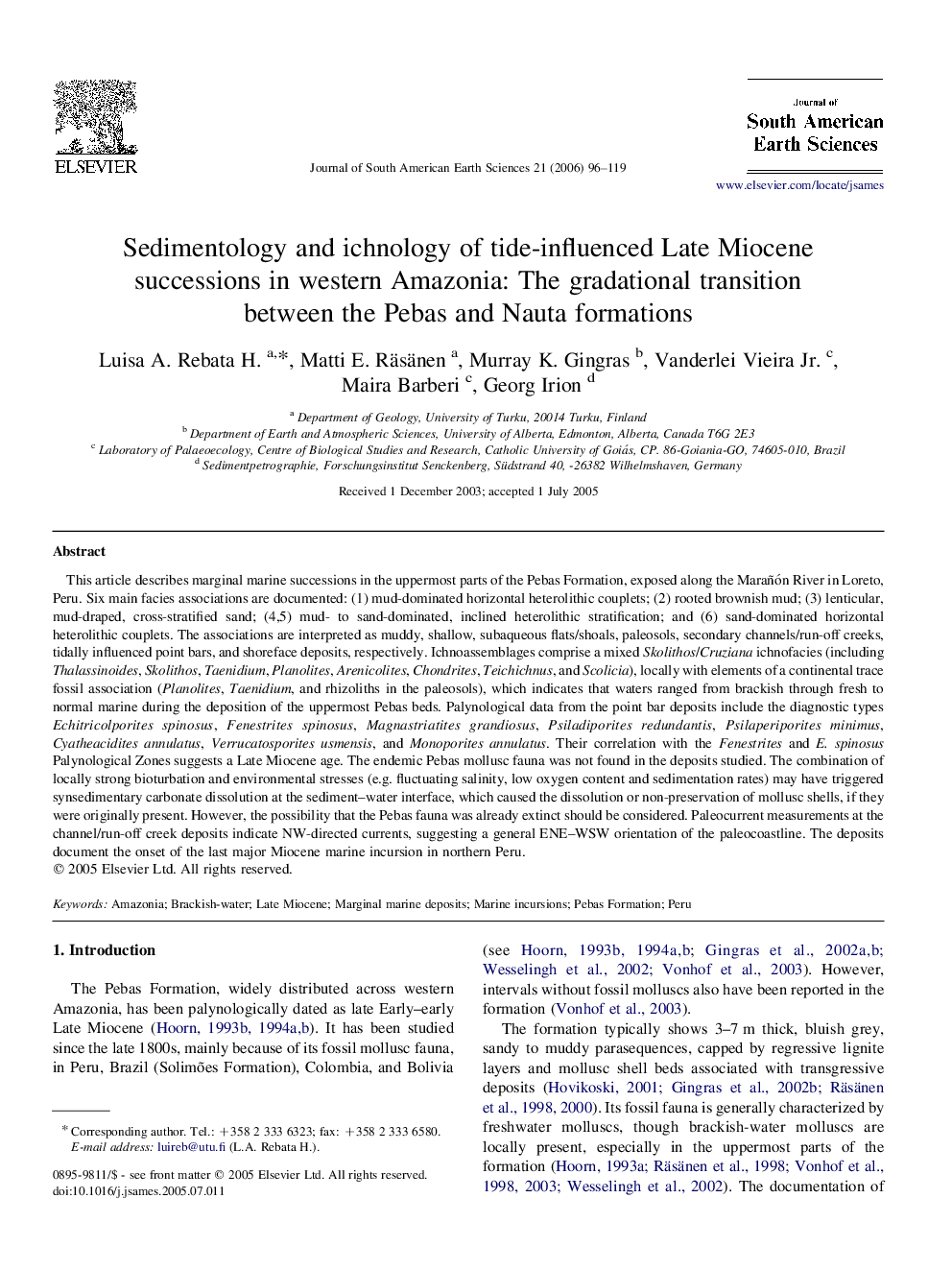| کد مقاله | کد نشریه | سال انتشار | مقاله انگلیسی | نسخه تمام متن |
|---|---|---|---|---|
| 4683056 | 1635183 | 2006 | 24 صفحه PDF | دانلود رایگان |

This article describes marginal marine successions in the uppermost parts of the Pebas Formation, exposed along the Marañón River in Loreto, Peru. Six main facies associations are documented: (1) mud-dominated horizontal heterolithic couplets; (2) rooted brownish mud; (3) lenticular, mud-draped, cross-stratified sand; (4,5) mud- to sand-dominated, inclined heterolithic stratification; and (6) sand-dominated horizontal heterolithic couplets. The associations are interpreted as muddy, shallow, subaqueous flats/shoals, paleosols, secondary channels/run-off creeks, tidally influenced point bars, and shoreface deposits, respectively. Ichnoassemblages comprise a mixed Skolithos/Cruziana ichnofacies (including Thalassinoides, Skolithos, Taenidium, Planolites, Arenicolites, Chondrites, Teichichnus, and Scolicia), locally with elements of a continental trace fossil association (Planolites, Taenidium, and rhizoliths in the paleosols), which indicates that waters ranged from brackish through fresh to normal marine during the deposition of the uppermost Pebas beds. Palynological data from the point bar deposits include the diagnostic types Echitricolporites spinosus, Fenestrites spinosus, Magnastriatites grandiosus, Psiladiporites redundantis, Psilaperiporites minimus, Cyatheacidites annulatus, Verrucatosporites usmensis, and Monoporites annulatus. Their correlation with the Fenestrites and E. spinosus Palynological Zones suggests a Late Miocene age. The endemic Pebas mollusc fauna was not found in the deposits studied. The combination of locally strong bioturbation and environmental stresses (e.g. fluctuating salinity, low oxygen content and sedimentation rates) may have triggered synsedimentary carbonate dissolution at the sediment–water interface, which caused the dissolution or non-preservation of mollusc shells, if they were originally present. However, the possibility that the Pebas fauna was already extinct should be considered. Paleocurrent measurements at the channel/run-off creek deposits indicate NW-directed currents, suggesting a general ENE–WSW orientation of the paleocoastline. The deposits document the onset of the last major Miocene marine incursion in northern Peru.
Journal: Journal of South American Earth Sciences - Volume 21, Issues 1–2, March 2006, Pages 96–119